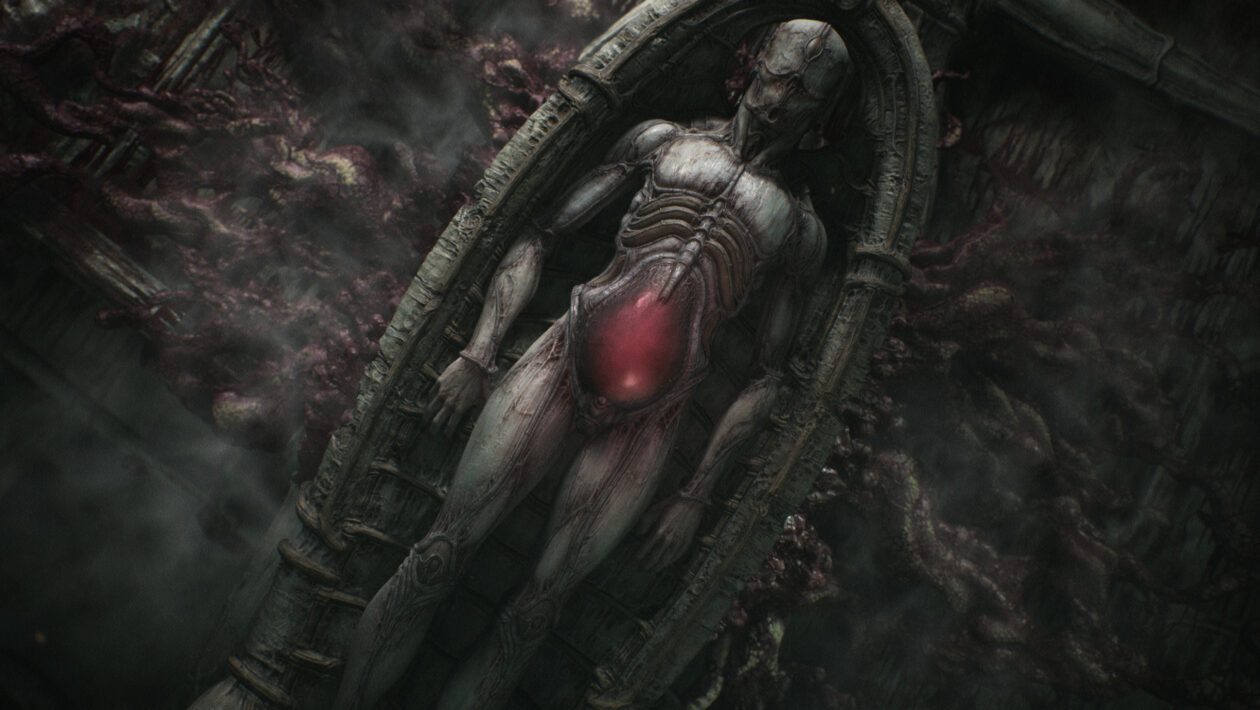Technical look back at Cyberpunk 2077 »Vortex
The cyberpunk genre comes with a charming retrofuturistic stylization, which the developers from the CD Project RED managed to capture perfectly in Cyberpunk 2077. As we have already described and evaluated in our review, Night City will completely engulf you with its processing and make you amaze in many places at the density and size of buildings, as well as at their specific design. The uncomfortable world full of contrasts then plays a breathtaking spectacle, especially in places where street lamps are reflected in puddles on the road, or in the centers of individual districts, from where neon signs and signs shine into the night. In this respect, Cyberpunk 2077 is a unique title, although in direct comparison with other big games from the competition, of course, the chosen theme and setting, which loads the visual side essentially automatically, helps.
Test set
CPU: Intel Core i7 6700K – 4 GHz
FRAME: 64 GB HyperX Fury DDR4
GPU: Gigabyte RTX 3080 Vision OC 10 GB
SSD: Samsung PM961 M.2 SSD
That’s why we wanted to give the review the maximum possible care and in the case of the chosen hardware, they deliberately followed the official specifications, which were known before the release. So if you are interested in what the Cyberpunk 2077 looks like with the maximum level of detail and how different the appearance of the city differs with ray tracing on and off, we offer you a quick view of the streets and a comparison of several direct shots. Even without an expensive and nowadays rather unavailable RTX card, you can expect a great spectacle on computers. Please note that Cyberpunk 2077 does not currently support DirectX ray tracing, so AMD cards are out of the game until the developers themselves.
The purpose of our short test is not to analyze in detail the operation of Cyberpunk 2077, we focus exclusively on ray tracing in the presentation of the GeForce RTX 3080 graphics card.
Although there have been a number of more powerful processors on the market for several years, the CD Projekt RED recommends an Intel Core i7-6700 or AMD Ryzen 5 3600 processor for gaming in high definition and with the highest ray tracing effects settings. We reached for a quad-core Intel, plus a K extension. , which indicates the possibility of overclocking the processor, but we left the frequency at the factory value of 4 GHz. The purpose of our short test is not to analyze in detail the operation of the Cyberpunk 2077, we focus exclusively on ray tracing in the presentation of the GeForce RTX 3080 graphics card in the Vision OC 10G model from Gigabyte. After connecting it and installing the latest drivers, the game will make two new tabs available in the graphics settings – ray tracing and resolution scaling with the help of DLSS technology, resp. FidelityFX.
 Source: CD Project RED
Source: CD Project REDBy a suitable combination of these items and a general setting, which usually includes three levels of shadow quality, volumetric effects or reflections, relatively satisfactory results can be achieved in terms of frame rate. Without a deeper analysis, however, we must generally state that the recommended processor is the narrowest neck of the entire specification, and without DLSS, playing in 4K is virtually impossible due to the low framerat. After all, even with RTX effects turned on, it drops below 1080 frames per second in 1080p framerate resolution, especially when driving fast through the city, and for a smooth experience, you definitely need to reach for a more powerful CPU.
But let’s go to the ray tracing mentioned several times, which we were already looking forward to in anticipation of the presence of many glass surfaces and the already mentioned neons not only on the streets, but also inside various clubs and restaurants. The first thing that pleasantly surprised me personally, paradoxically, is the presentation of the game without the effects turned on. Although it depends on the situation and the surface, for example, reflections on sidewalks work very well even without RTX switched on. In addition, if you didn’t have a direct comparison, you might be surprised that the pavement surface shines less when ray tracing is turned on, but better said, and more realistically. However, if it is not just a diffusion of light, but a direct reflection of an object or inscription, the difference is much more obvious and you will of course not achieve direct mirroring without RTX.
Also, reflections from the water surface are free of all details after turning off ray tracing, although of course the reflection does not disappear completely. However, this is not a surprise or explicitly above-standard care, given the usual level of simulated reflections, which is nothing new for video games in general. After all, the Red Engine, which in its older version also powered the third Sorcerer, is valued for the quality of processing of individual materials, which plays its role not only in light reflections, but also in creating shadows. This is also evident in the faces, where the corresponding shadow of the nose or other parts of the face is projected, adding to the overall believability.
For the overall impression, however, the key is a combination of available technologies and effects, which hand in hand with ray tracing includes volumetric light and fog. It is the passage of rays of light through water vapor and their subsequent scattering into space that creates a stunning impression in many places and, in addition, directly controls the complete repainting of individual locations as you walk or pass between them. At the same time, the transitions are realistic and Cyberpunk 2077 constantly proves that the developers from the RED Project CD went against the visual experience. On the other hand, the best graphics really take a high toll on the hardware, and turning on DLSS is basically a must if you want to enjoy a game with ray tracing. However, as can be seen, for example, when the protagonist looks at himself in the mirror, the individual DLSS modes, which give greater preference to either the resulting quality or higher performance, often speak unnecessarily dramatically into the picture, and we are talking about a static scene where the calculation of graphics by artificial intelligence to the target resolution creates unpleasantly blurred places.
Thanks to the wide range of settings, however, it is really possible to find a balance between hardware requirements and a breathtaking spectacle, which, taking into account the scope of Night City, really takes the perception of graphics in open-world games to a new level and we will be honestly curious how far Cyberpunk 2077 will be. by submitting your get to the new consoles when the next-gen upgrade is available. But as you certainly feel for yourself, at the moment the people from the CD Project have a little different worries.


